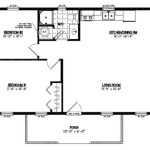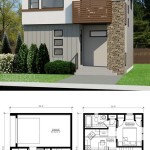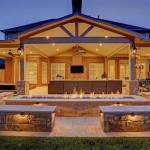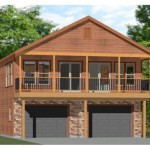Free Dog House Plans and Material List: Building a Comfortable Shelter for Your Companion
Providing adequate shelter for a dog, especially one that spends a significant amount of time outdoors, is crucial for its health and well-being. A well-constructed dog house offers protection from the elements, including rain, snow, wind, and excessive heat. While commercially available dog houses are readily accessible, constructing one independently allows for customization tailored to the specific needs and size of the dog, potentially at a lower cost. This article explores the availability of free dog house plans and provides a comprehensive overview of essential materials needed for a successful build, enabling individuals to provide a safe haven for their canine companions.
Accessing Free Dog House Plans
Numerous online resources offer free dog house plans catering to varying skill levels and design preferences. These plans typically include detailed diagrams, step-by-step instructions, and cutting lists, simplifying the construction process. Websites dedicated to woodworking, DIY projects, and animal care often host these resources. Search engines can be effectively utilized by entering search terms such as "free dog house plans," "DIY dog house blueprints," or "dog house plans with material list."
When selecting a plan, careful consideration must be given to its suitability for the intended application. Factors to assess include the dog's size, the climate in which the dog house will be situated, and the individual's carpentry expertise. Simple, A-frame designs are often suitable for beginners, while more complex designs incorporating features such as insulation or porches may require advanced woodworking skills. It is essential to thoroughly review the plans before commencing construction to ensure a clear understanding of the process and to identify any potential challenges.
Furthermore, some free plans may be incomplete or lack sufficient detail. Cross-referencing information from multiple sources and consulting online forums or communities dedicated to dog house construction can help clarify any ambiguities and provide valuable insights from experienced builders. Printing the chosen plan and referencing it throughout the construction process is highly recommended.
Before embarking on the project, ensure the chosen plan accurately reflects all desired features and incorporates appropriate safety considerations for the dog. A properly designed dog house should offer adequate ventilation, protection from drafts, and a comfortable interior space that allows the dog to stand, turn around, and lie down comfortably.
Essential Materials for Dog House Construction
The selection of appropriate materials is critical for the durability, weather resistance, and overall comfort of the dog house. The specific materials required will vary depending on the chosen plan, but some common elements are consistently used in most dog house designs.
Wood: Plywood is a commonly used material for the walls and roof due to its affordability and availability. Exterior-grade plywood is recommended to withstand exposure to the elements. Dimensional lumber, such as 2x4s or 2x3s, is used for framing the structure and providing structural support. Treated lumber is advisable for the base of the dog house to prevent rot and insect infestation. The specific type of wood used can also influence the insulation value of the dog house; thicker wood provides better insulation.
Fasteners: Galvanized nails or screws are essential for securely joining the wooden components. The length of the fasteners should be appropriate for the thickness of the materials being joined. Using screws generally provides a more secure and long-lasting connection compared to nails. Consider using weather-resistant screws, especially for exterior applications.
Roofing Material: Shingles, asphalt roofing, or metal roofing can be used to protect the dog house from rain and snow. The choice of roofing material will depend on factors such as cost, aesthetics, and durability. Shingles offer good weather resistance and are relatively easy to install. Metal roofing is more durable but may require specialized tools and skills for installation. Properly sealing the roof is crucial to prevent leaks and maintain a dry interior.
Insulation: Insulation is essential for regulating the temperature inside the dog house, keeping it warm in the winter and cool in the summer. Rigid foam insulation boards or fiberglass insulation can be used. It is important to ensure that the insulation is properly sealed and protected to prevent the dog from chewing or ingesting it. Consider using non-toxic insulation materials to ensure the dog's safety.
Weatherproofing: Caulk or sealant is used to seal gaps and cracks in the dog house, preventing drafts and moisture from entering. Applying caulk around the seams where the walls meet the roof and floor is particularly important. Exterior-grade paint or stain can be applied to the outside of the dog house to protect the wood from the elements and enhance its appearance. Select paints or stains that are non-toxic and safe for animals.
Hardware: Hinges and latches may be required if the dog house has a door or removable access panel. Choose durable, weather-resistant hardware to ensure that it will withstand repeated use and exposure to the elements. Consider using stainless steel or galvanized hardware to prevent rust.
Bedding: Providing comfortable bedding inside the dog house is essential for the dog's comfort. Straw, blankets, or dog beds can be used. The bedding should be regularly cleaned and replaced to prevent the buildup of dirt and bacteria. Consider using waterproof bedding to protect against moisture.
A detailed material list should be compiled based on the chosen dog house plan. This list should include the quantity and dimensions of each material required. Accurately estimating the materials needed will help minimize waste and ensure that enough materials are available to complete the project.
Tools and Construction Techniques
Successful dog house construction requires a range of tools and a basic understanding of woodworking techniques. The specific tools needed will depend on the complexity of the chosen plan, but some essential tools are commonly used.
Safety Equipment: Prioritizing safety is paramount when undertaking any construction project. Safety glasses, gloves, and a dust mask should be worn at all times to protect against injury and exposure to harmful substances. Ear protection should be used when operating power tools. A first-aid kit should be readily available in case of accidents.
Measuring and Cutting Tools: A tape measure, ruler, and square are essential for accurately measuring and marking materials. A circular saw or hand saw can be used for cutting wood. A jigsaw is useful for cutting curved or intricate shapes. A miter saw can be used for making accurate angle cuts.
Fastening Tools: A drill or screwdriver is used for driving nails or screws. A hammer is used for driving nails. A nail gun or screw gun can be used to speed up the fastening process.
Other Tools: A level is used to ensure that the dog house is level and square. A sander is used to smooth rough edges and surfaces. A paint brush or roller is used for applying paint or stain. A caulk gun is used for applying caulk or sealant.
Before commencing construction, thoroughly familiarize oneself with the chosen plan and gather all necessary tools and materials. A clear and organized workspace will facilitate the construction process. Carefully follow the instructions in the plan and take the time to ensure that each step is completed correctly. Accurate measurements and precise cuts are essential for a structurally sound and aesthetically pleasing dog house.
When working with power tools, always follow the manufacturer's instructions and take appropriate safety precautions. Avoid working in wet or damp conditions. Disconnect power tools from the power source when not in use. Store tools in a safe and secure location.
Furthermore, consider the dog's safety throughout the construction process. Avoid using sharp or pointed objects that could pose a hazard to the dog. Ensure that all edges and surfaces are smooth and free from splinters. Regularly clean the construction area to remove debris and prevent accidents.
Building a dog house can be a rewarding experience, providing a customized and comfortable shelter for a beloved pet. By carefully selecting a suitable plan, gathering the necessary materials, and employing proper construction techniques, individuals can create a safe and durable dog house that will provide years of protection and comfort.

Large Dog House Plans Free Construct101

Gable Roof Dog House Plans
:strip_icc()/Beautiful-Pallet-Dog-House-with-Veranda-1-5a202f90494ec90037893a82.jpg?strip=all)
14 Free Diy Dog House Plans Anyone Can Build

Free Dog House Plans Western Style
:strip_icc()/IMG_2589-5a202f1c7d4be800191a3845.jpg?strip=all)
14 Free Diy Dog House Plans Anyone Can Build

Dog House Plans For Large Clearance

Free Diy Dog House Plans Clearance

Free Dog House Plans And Material List Hot
:strip_icc()/lowes-free-dog-house-plans-5829ecd23df78c6f6a1a00e7.jpg?strip=all)
14 Free Diy Dog House Plans Anyone Can Build

13 Diy Doghouse Plans And Ideas The House Of Wood
Related Posts








